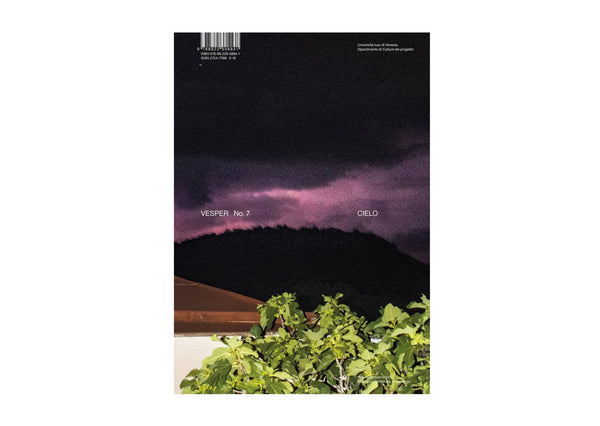
Various Authors
Vesper No. 7: Cielo | Sky
Università Iuav, Venezia — 2022
In the book In un volo di storni (In a Flight of Flocks) Giorgio Parisi remarks that gravitational theories arise from things that fall. Speaking of the paintings Gustav Klimt made for the University of Vienna in 1907, Adolf Loos wrote that “Klimt has seized the sky and handed it to us. He has grabbed the old sky [...] Yet a new sky has been made ready for us, one that has neither a top nor a bottom, where no one has to sit on top of a cloud to avoid falling down, where there is no going up nor going down”.
There is a fifth facade, a space that can be inhabited by manipulating gravity, breaking free from the earth, embracing each and every world, whether by referring to the stars or by considering, as Parisi recalls, the observation of phantasmagorical images formed by starlings at sunset, or – in Loos’ words – by giving form to mystical-metaphysical dreams.
To look at the sky is to go beyond all limits; it is to welcome uprooting in order to explore, even if this means burning in the heat of the sun.